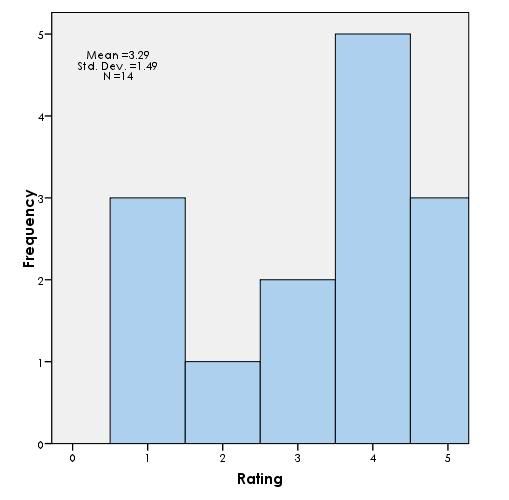
This is the core principle in the practice of "cold reading," the method that psychics use to convince a mark that they are "in tune" with their thoughts or are capable of speaking to their dead relatives. The general strategy is that by rapidly presenting a series of statements, attentional limitations will force the mark to only attend to the elements of the reading that fit with their self perception. Based on feedback from the mark, the psychic can then begin to make more specific guesses in order to personalize the reading.
The Myers-Briggs personality inventory is one of the most prevalent personality tests and has gone through a number of revisions in the course of its development. It was originally designed by Isabel Briggs Myers and her mother as a tool for directing people to the vocation they were best suited for. In 1975, it was taken over by Consulting Psychologists Press, Inc. In its current state, the inventory classifies people into one of 16 possible categories (a combination of levels on four different factors). The resulting personality description sounds much like what you would hear from a psychic (or a horoscope). Here's one description taken from The Skeptic's Dictionary:
Usually have original minds and great drive for their own ideas and purposes. In fields that appeal to them, they have a fine power to organize a job and carry it through with or without help. Skeptical, critical, independent, determined, sometimes stubborn. Must learn to yield less important points in order to win the most important.
As Forer (1949) stated,"The individual lacks the quantitative frame of reference necessary for a critical comparison of the printed description and his own self-reference," thus concluding that the description is a solid representation of his or her personality. Forer tested this tendency by administering a personality test to a group of his introductory psychology students. One week later, he provided them all with what they thought were the resultant personality descriptions. In actuality, each student received an identical personality description with their name at the top of the page, which read as follows:
You have a great need for other people to like and admire you. You have a tendency to be critical of yourself. You have a great deal of unused capacity which you have not turned to your advantage. While you have some personality weaknesses, you are generally able to compensate for them. Your sexual adjustment has presented some problems for you. Disciplined and self-controlled outside, you tend to be worrisome and insecure inside. At times you have serious doubts as to whether you have made the right decision or done the right thing. You prefer a certain amount of change and variety and become dissatisfied when hemmed in by restrictions and limitations. You pride yourself as an independent thinker and do not accept others' statements without satisfactory proof. You have found it unwise to be too frank in revealing yourself to others. At times you are extroverted, affable, sociable, while at other times you are introverted, wary, reserved. Some of your aspirations tend to be pretty unrealistic. Security is one of your major goals in life.
As you can see, this is an exceedingly general description, and most people possess many of these traits (although in differing levels). Forer had his students rate how well the personality description reflected their personalities on a scale from zero to five, with five being "perfect." He found that the students overwhelmingly perceived the description to fit their personalities to a high degree. Only one student gave the description a rating below 4, and the average rating was 4.3. Just as in the case of cold reading, the sheer volume of items in the description forces people to only focus on those items that seem to fit. They completely ignore inaccurate items.
I know what you're saying: "Oh, that could never happen to me. I'm an astute, logical person. I don't understand how those students couldn't see through the charade." Well, just for fun, I posted Forer's personality description on my Facebook page, and asked friends to rate it on how accurately it fit their personalities. Here are the results:

Despite my small n, a large number of my participants rated the description as being quite representative of their personality. The mean was much lower than in Forer's experiment, but remember that these participants did not complete any sort of personality test before receiving their "results." Thus, there was reason to be skeptical. So, next time you are watching a psychic, I hope you'll keep this information in mind. Don't fall into the trap that is the fallacy of personal validation.
References:
Dutton, D. (1988). The cold reading technique. Experientia, 44, 326-332.
Forer, B. R. (1949). The fallacy of personal validation: A classroom study of gullibility. Journal of Abnormal Social Psychology, 44, 118-123.
References:
Dutton, D. (1988). The cold reading technique. Experientia, 44, 326-332.
Forer, B. R. (1949). The fallacy of personal validation: A classroom study of gullibility. Journal of Abnormal Social Psychology, 44, 118-123.







0 comments:
Post a Comment